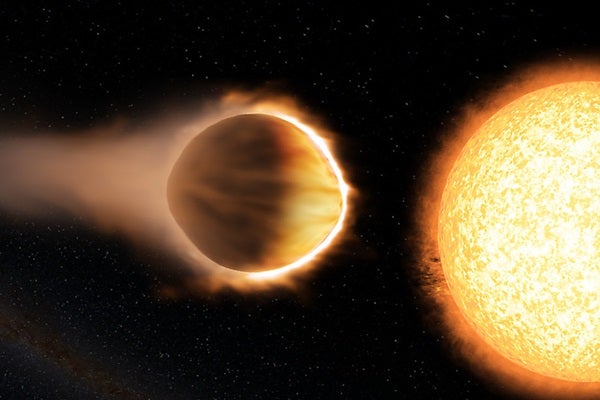Despite the intriguing nature of these odd, hellish worlds, scientists still know relatively little about them. However, a new study set for publication in the journal Astronomy and Astrophysics seeks to change that.
In the study, an international team of researchers modeled the atmospheres of four known ultra-hot Jupiters that were previously investigated using the Hubble and Spitzer space telescopes. And based on their work, the team concluded that ultra-hot Jupiters are even more two-faced than astronomers initially thought.
Specifically, the team found that the dayside of these exoplanets is so intense that the heat can split apart most types of molecules into their basic building blocks. And since these molecules are broken apart, they remain hidden from the gaze of even our most advanced observatories. This led the researchers to a surprising conclusion: The dayside atmosphere of an ultra-hot Jupiter resembles a star more than a planet.
Although this result is interesting in its own right, it also helps explain why astronomers only detect water molecules at the day-night border of ultra-hot Jupiters. The team found that as hydrogen and oxygen atoms make their way to the cooler nightside of the planet, they recombine to form water. However, since the nightside is too dark to observe, astronomers can only detect these water molecules right at the border between day and night.
This new research not only sheds light on a little-understood category of exoplanets, but also provides a valuable framework that will help astronomers better understand the physical processes that govern these mold-breaking worlds. And with NASA’s planet-hunting TESS telescope gearing up for duty, the more we know, the better.










